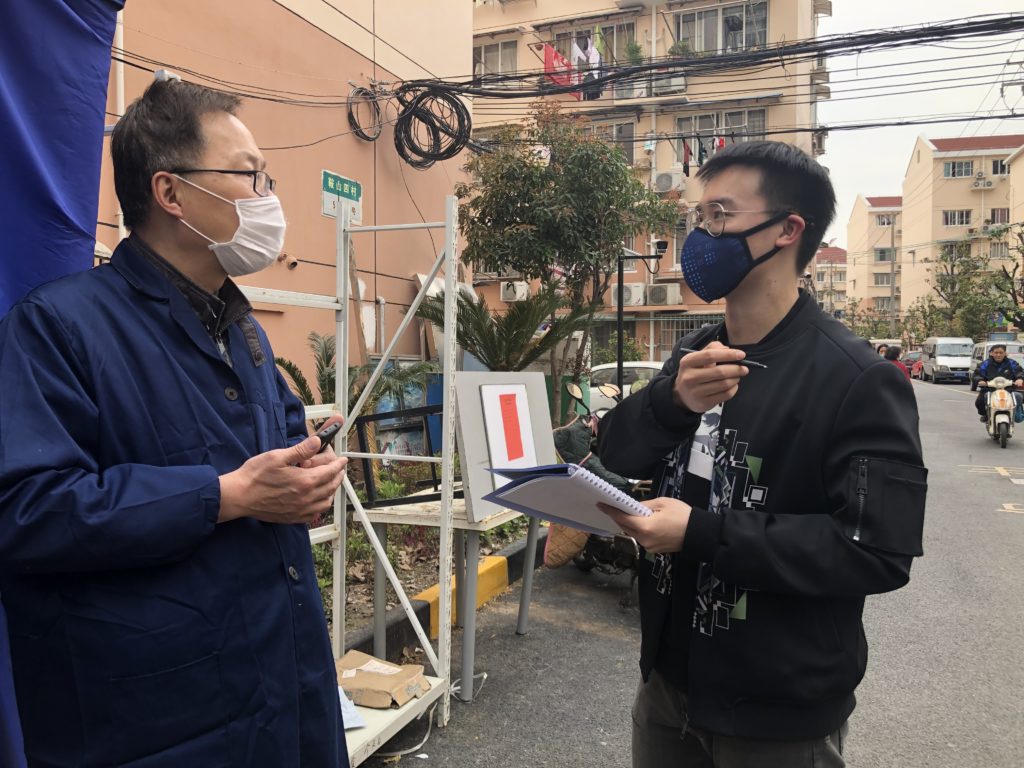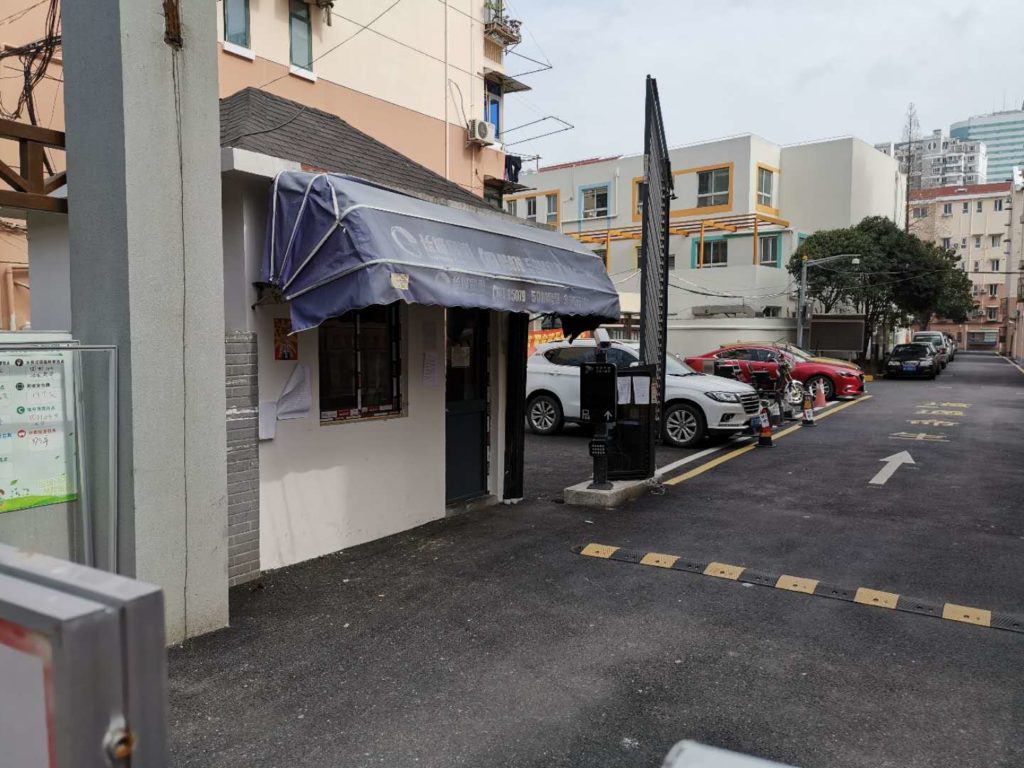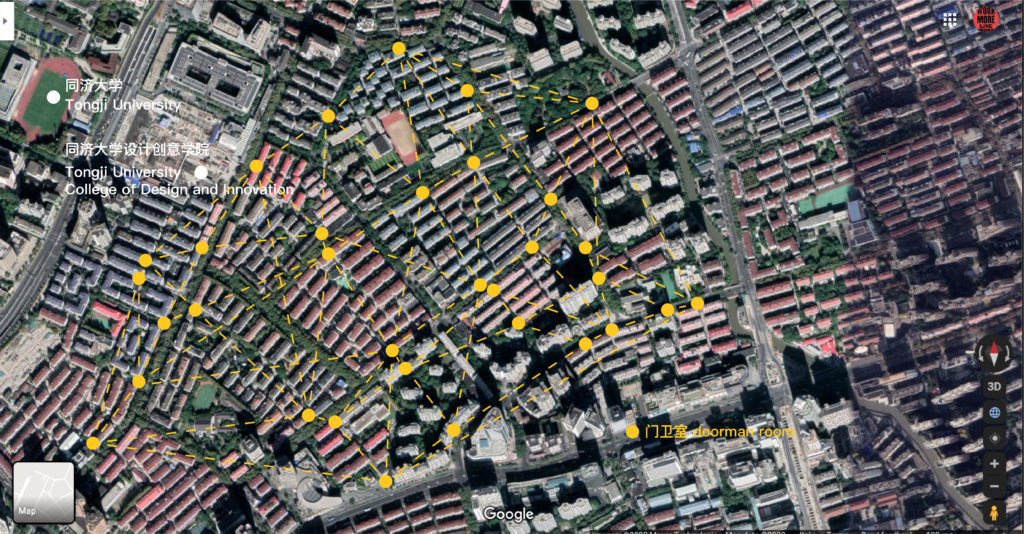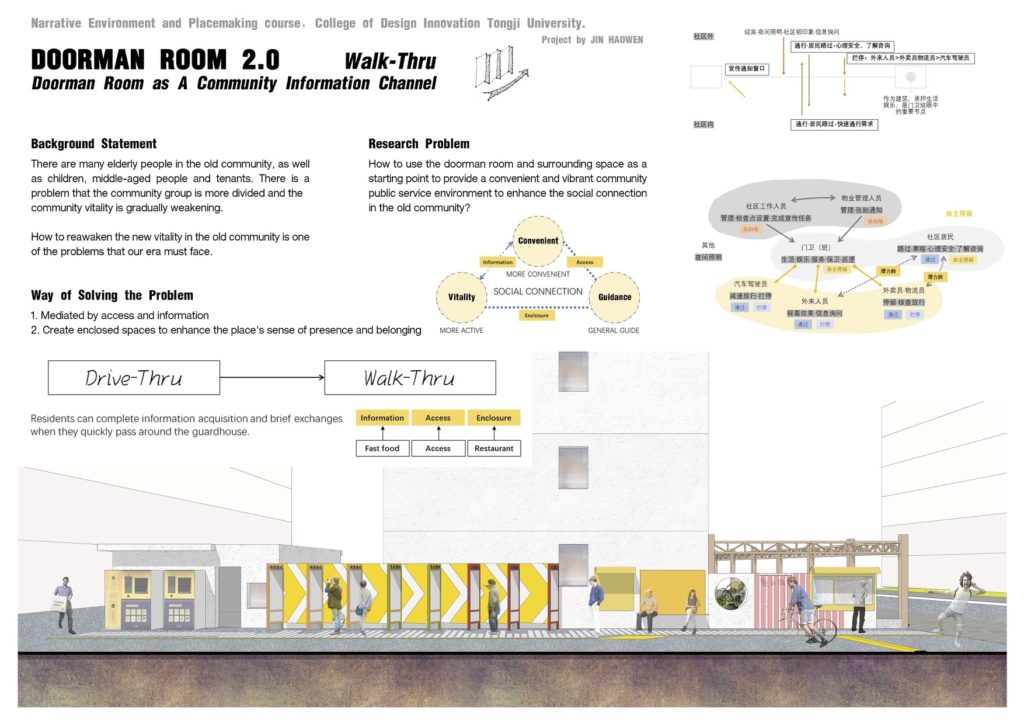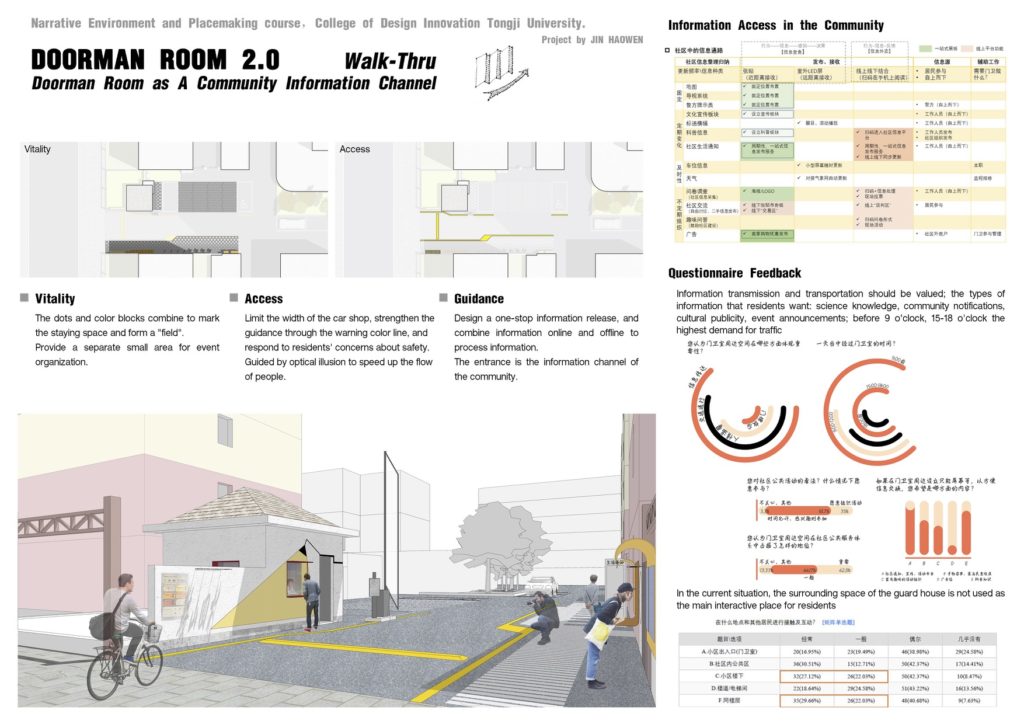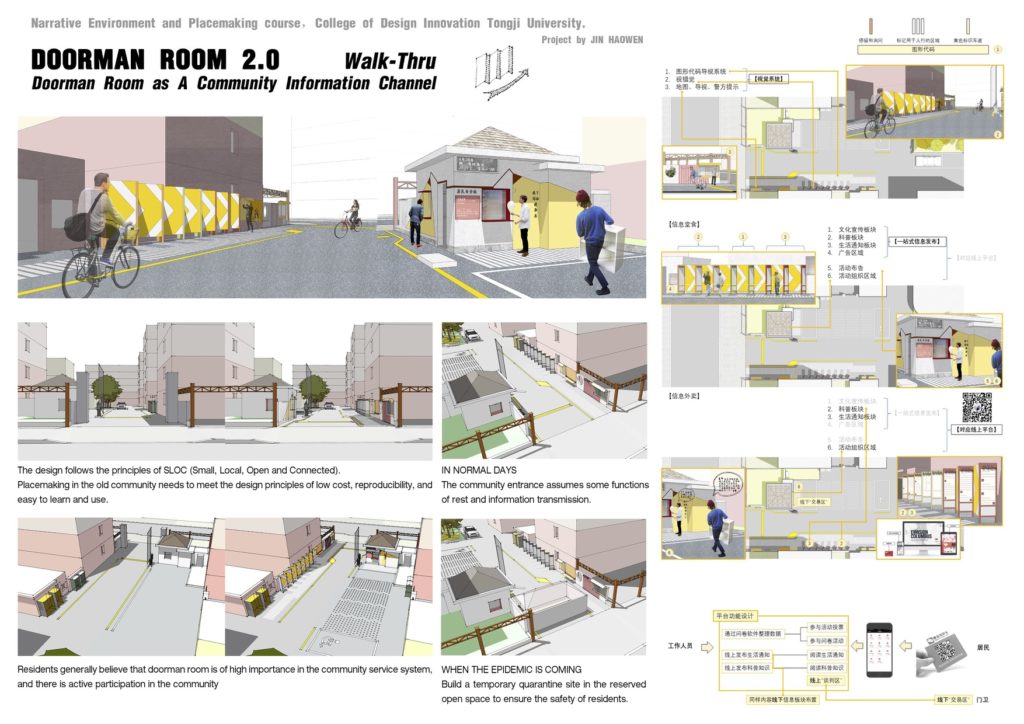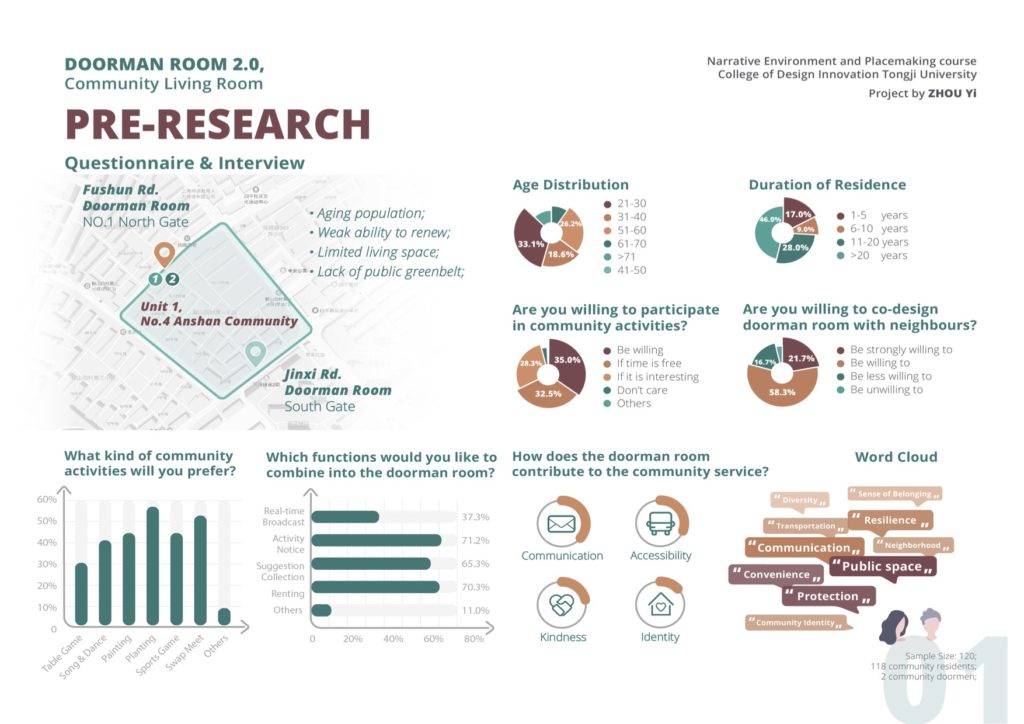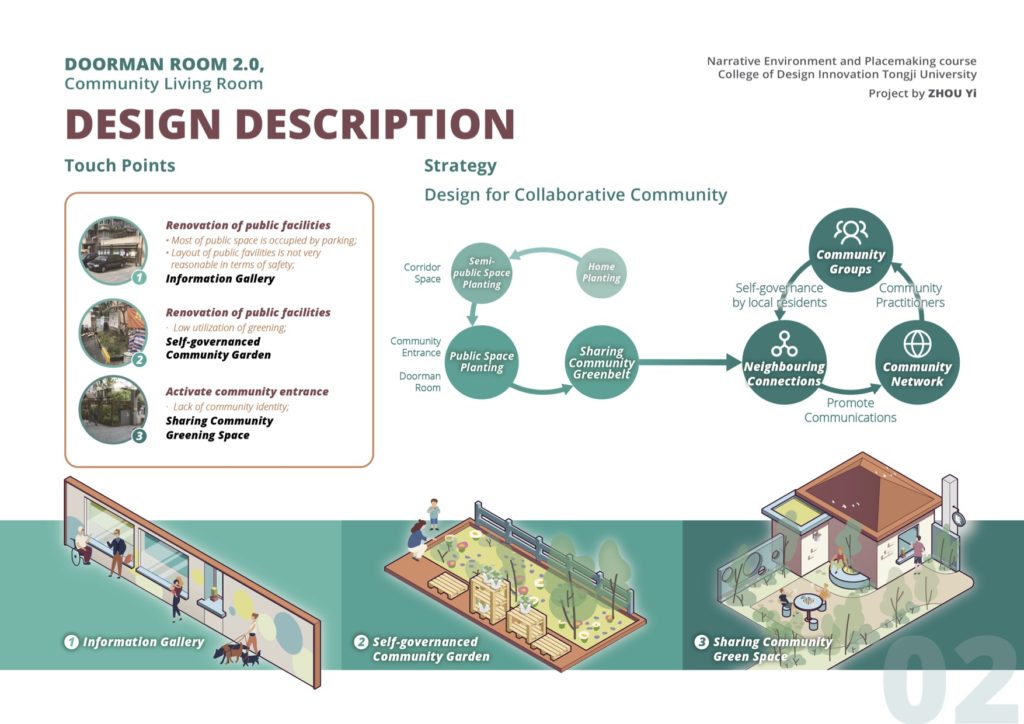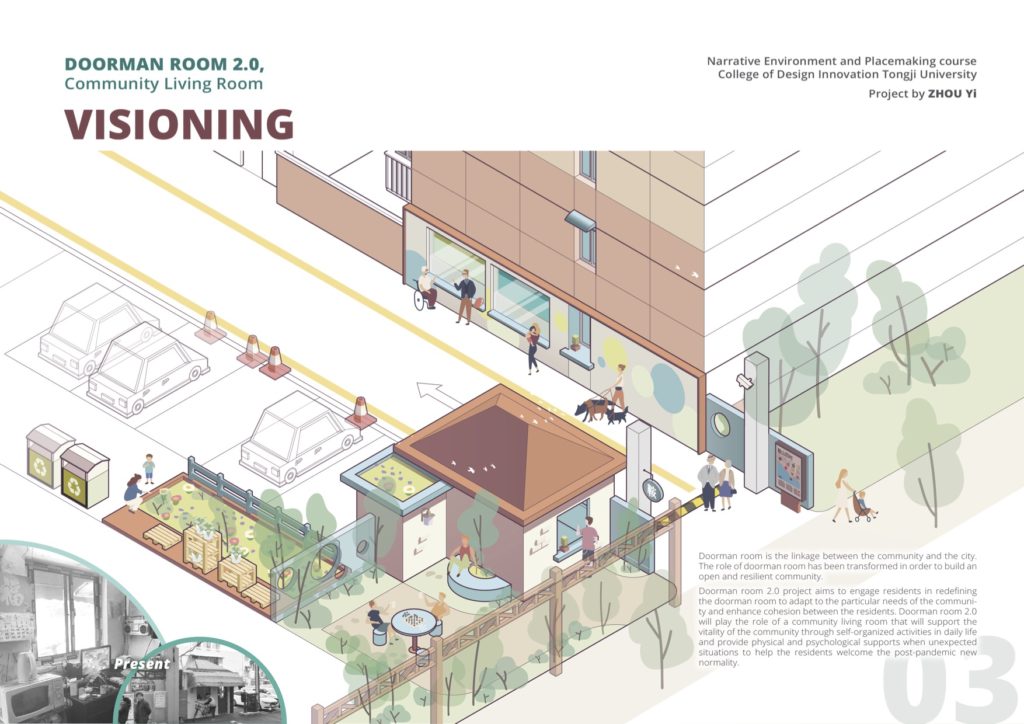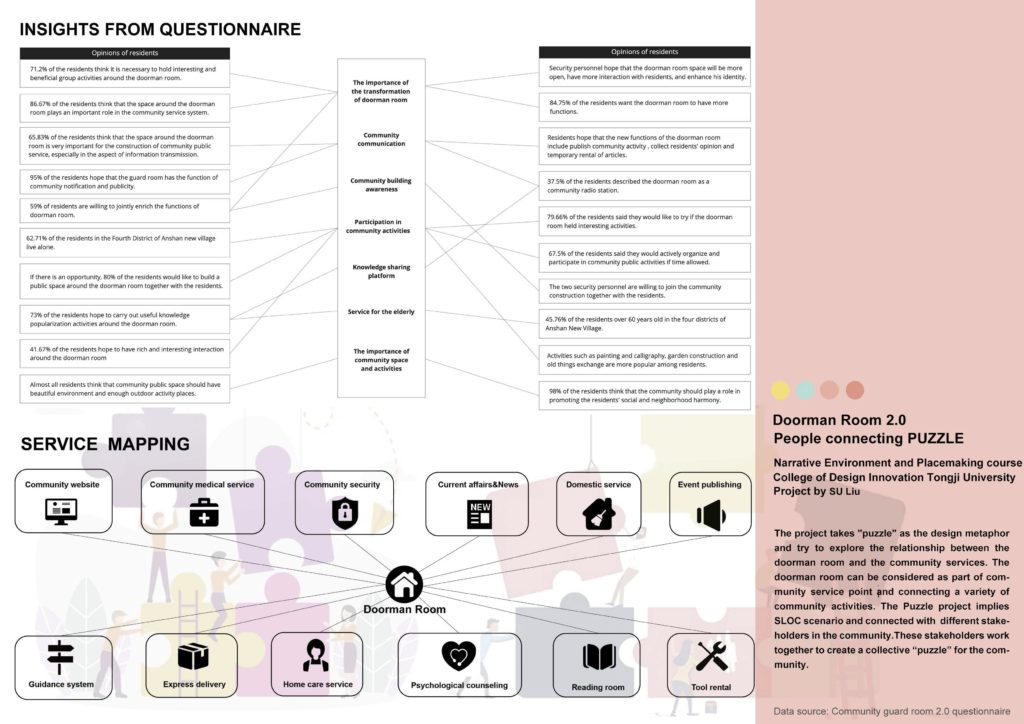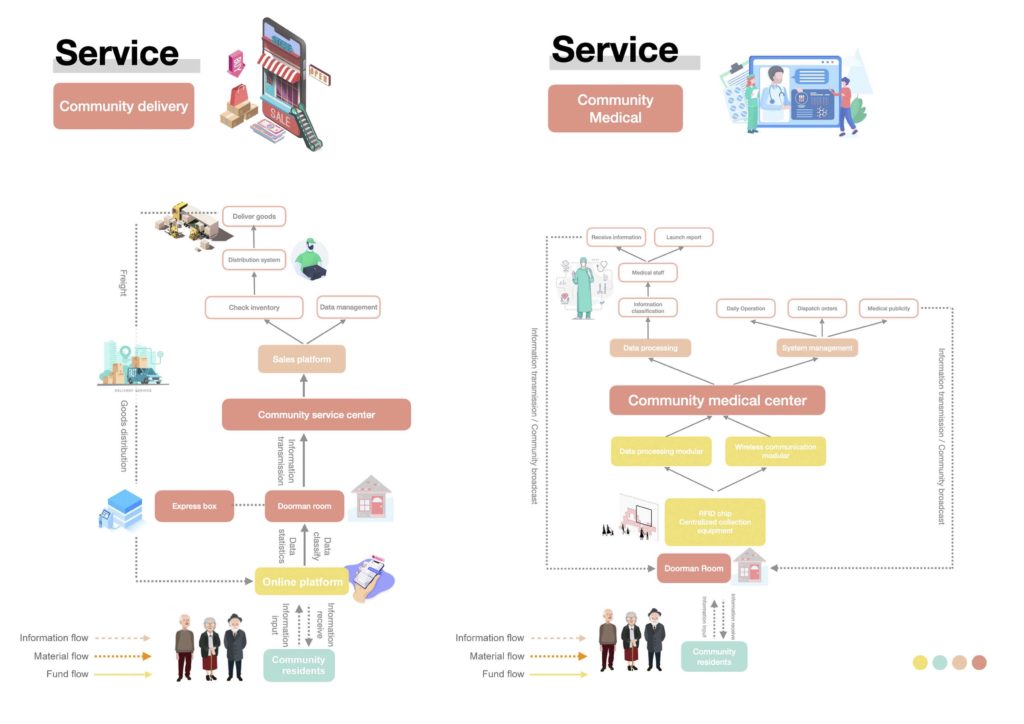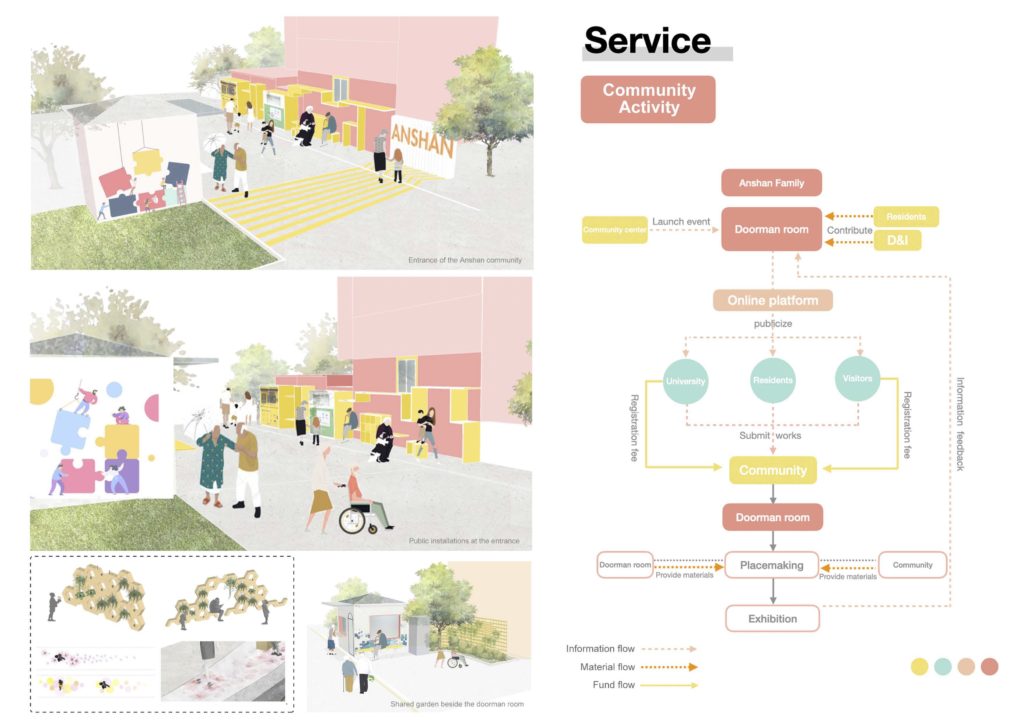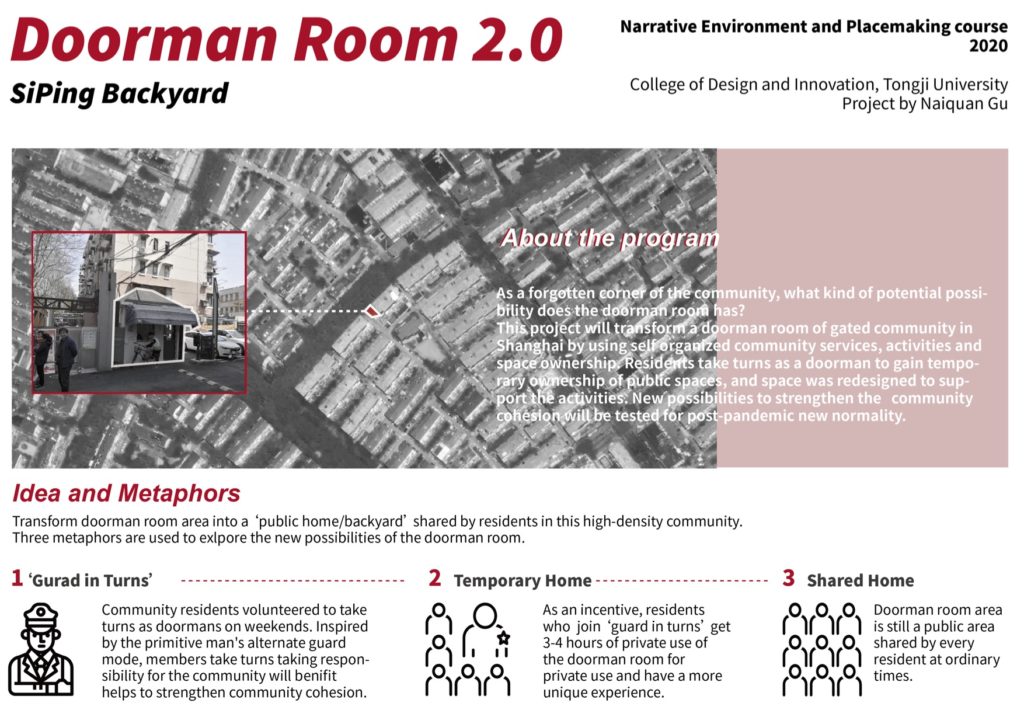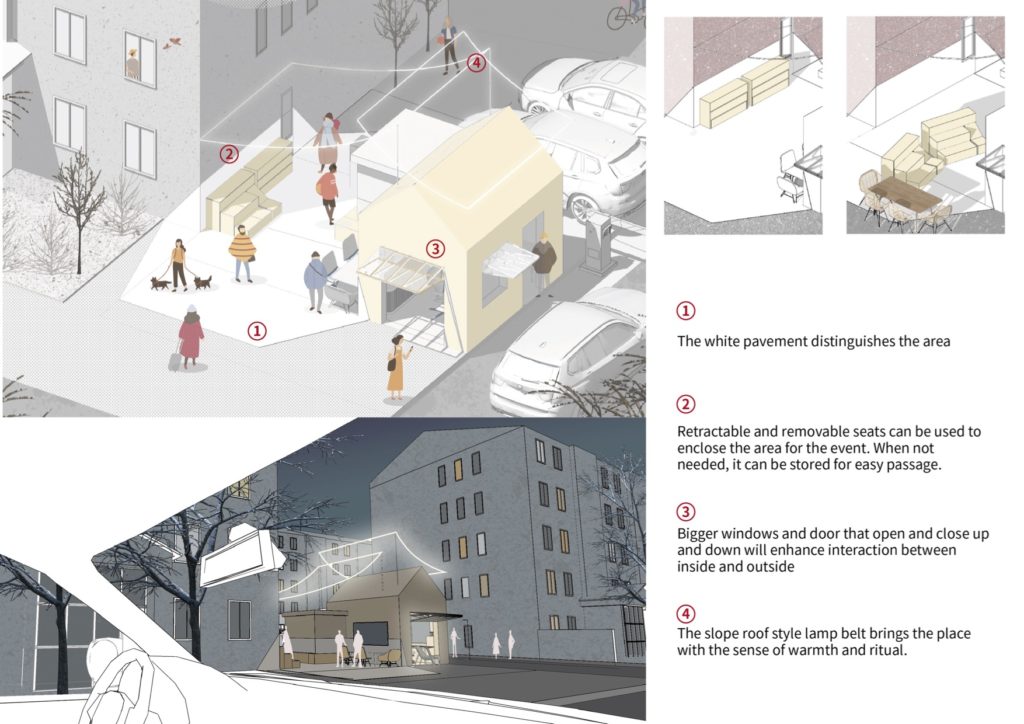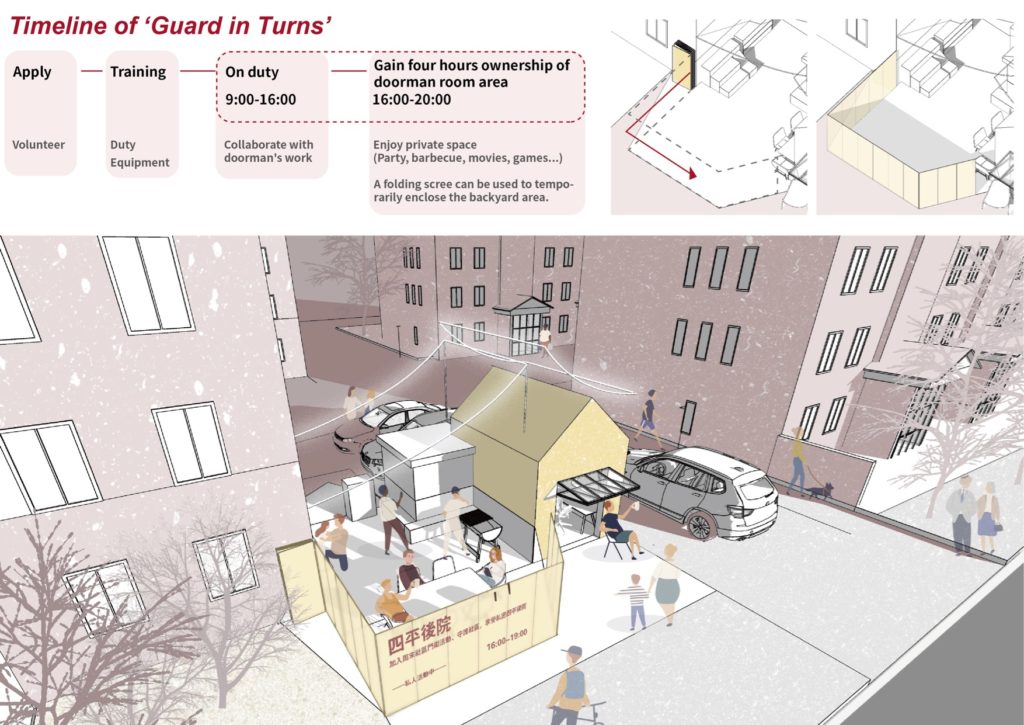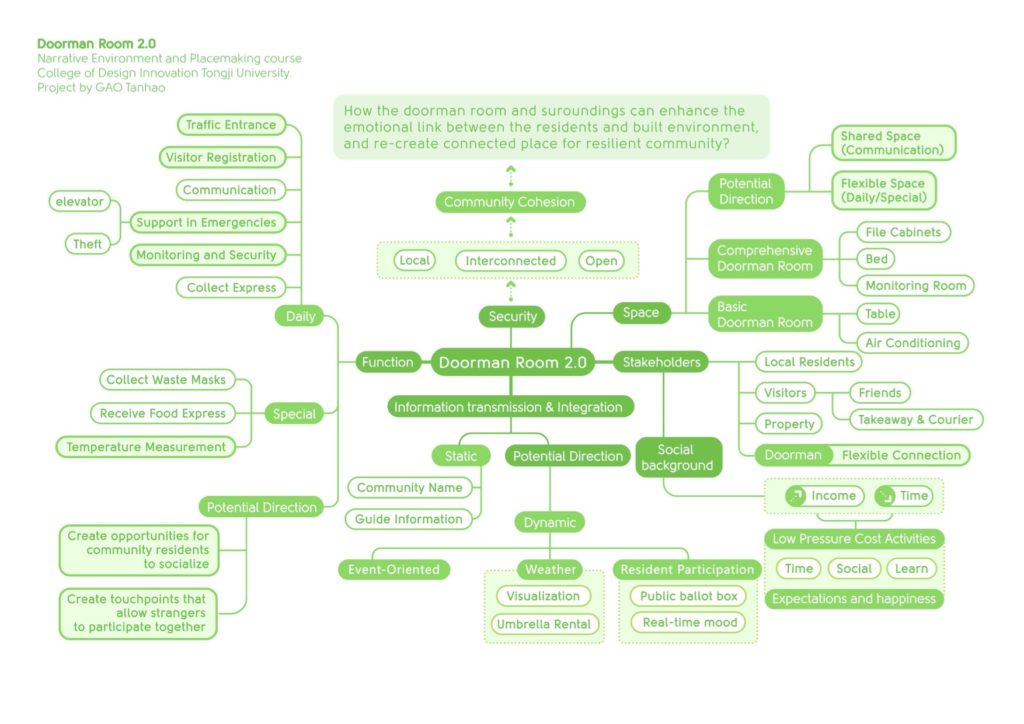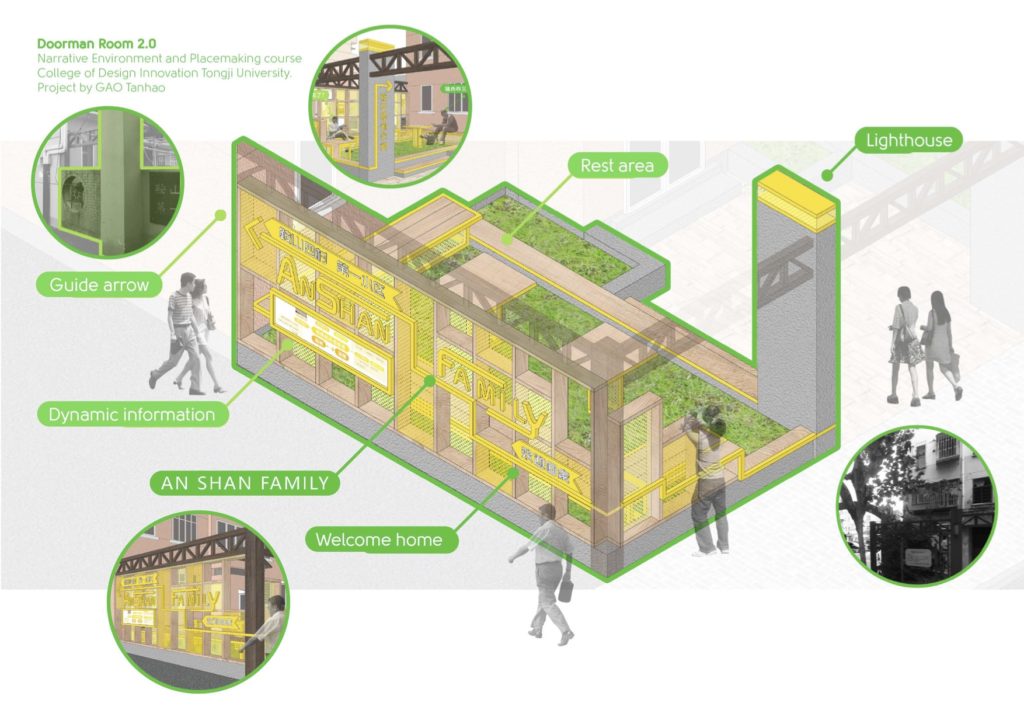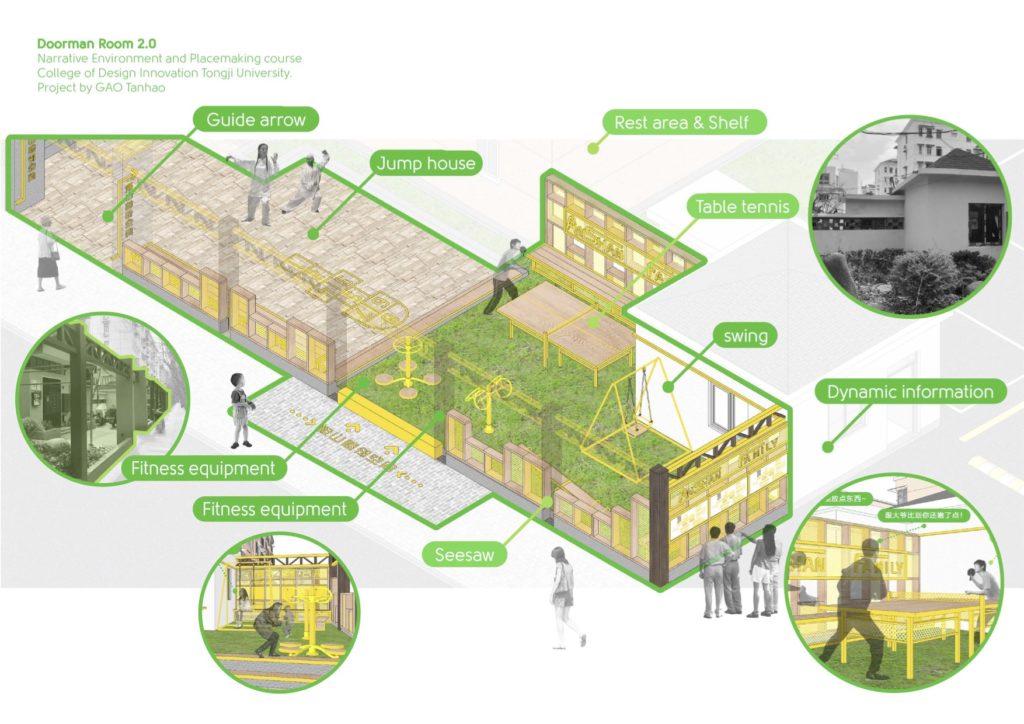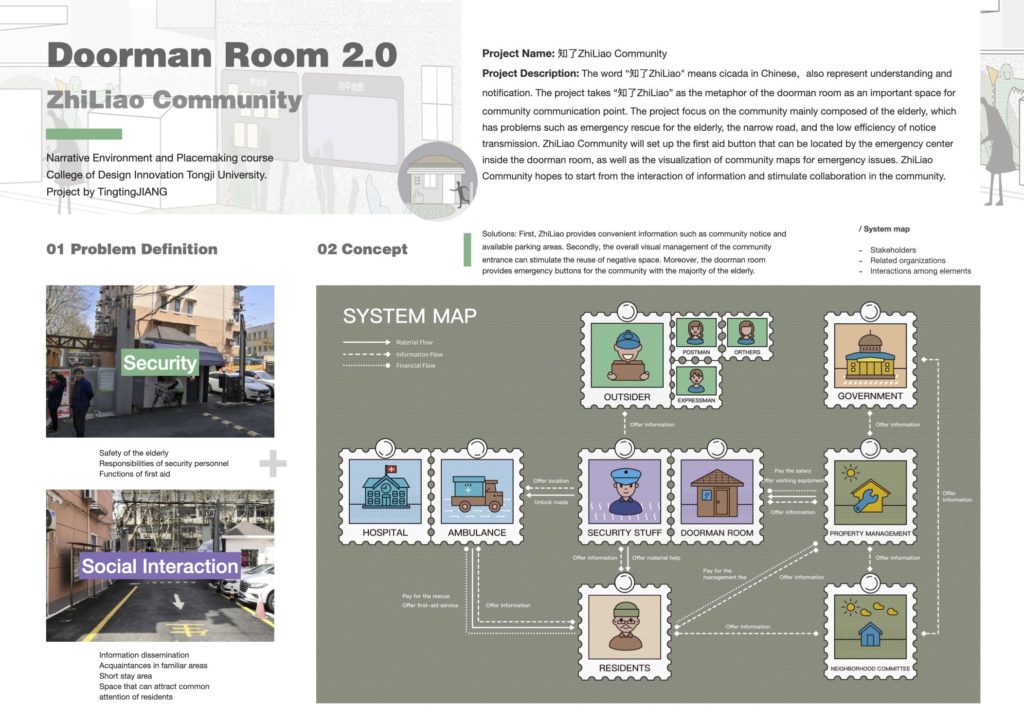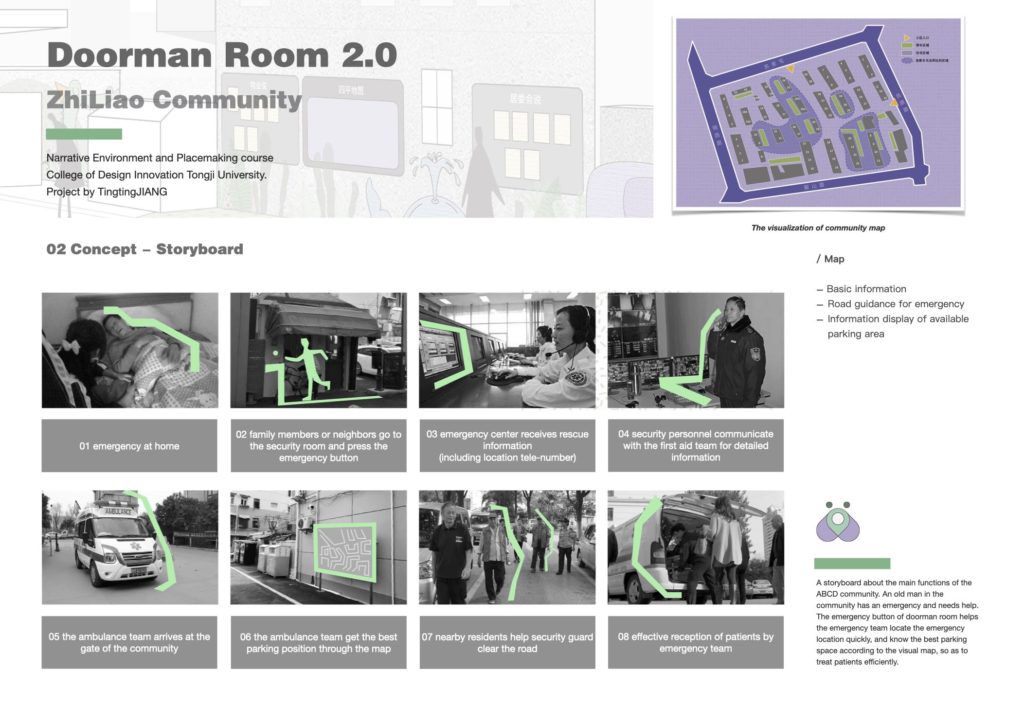POC Doorman’sRoom 2.0, Shanghai- CN
The community’s doorman’s room
Could the doorman’s room be connected to a community service? Could the doorman’s room hold community gatherings? How could a doorman’s room play a key role in rebuilding the community into a more resilient one, by investing in a welcoming and meaningful place for all?
Promoting engagement
Doorman’s Room 2.0 is a research and design project initiated by Tongji DESIS Lab and supervised by the College of Design Innovation’s Narrative Environment and Placemaking course, at Tongji University. It’s part of the Open Your Space (OYS) project, a collaboration with the local government to promote sustainability, comfort and accessibility to public space in urban communities. Doorman’s rooms are typical of gated communities in China, and depending on the community’s scale, you might find 1 or 2 of them, always located in the entrance/s. The project focuses on the doorman’s room’s existing function and condition, and further explores how design can strategically create new narratives around the challenges of social distancing, along with promoting engagement in the future.
SLOC scenario for resilient communities
Doorman’s Room 2.0focuses on the doorman’s room as a physical space to connect together the local identity, community services, activities and social interactions, through the creation of a space in physical, social and environmental terms. The aim is to create a third place, a new paradigm of spatial and social resilience, by using a community-led placemaking strategy. Thus the project folds under the Small, Local, Open and Connected (SLOC) scenario, moving towards sustainable solutions and synthesising the sociotechnical system within the Chinese urban context. Doorman’s Room 2.0advocates the design influence of public space in culture, in the social context and the social system, and analyses how to use public space design intervention strategies in order to model resilient community mechanisms.
- Project holders : Tongji DESIS Lab,College of Design and Innovation- Tongji University
- Designers : les superviseurs Ni Minqing, Tiziano Cattaneo & 18 étudiants du Master Narrative Environment & Placemaking
- Stakeholders : Siping sub-district, Yangpudistrict
- Photo credits : Tongji DESIS Lab, POC Doorman’sRoom 2.0

